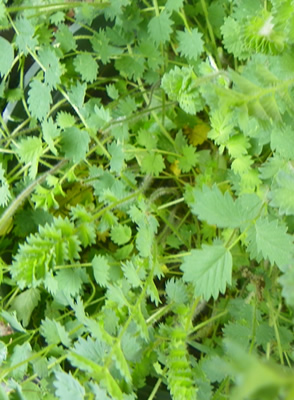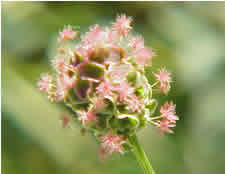Salad Burnet Sanguisorba minor

Salad burnett leaves
- Common Names
- Salad Burnet , Lesser Burnet
- Botanical Name
- Sanguisorba minor
- Syn. Poterium Sanguisorba
- Family
- ROSACEAE
Medicinal Uses & Benefits of Salad Burnet
![]() How to Use|
Side Effects |
Plant & Garden|
How to Use|
Side Effects |
Plant & Garden|
- Medicinal Uses: * Culinary/Kitchen
* Cuts & Wounds
* Nutrition
* Spring Tonics
- Properties: * Astringent * Cordial * Diaphoretic * Styptic
- Parts Used: Leaves
- Constituents: beta-sitosterol,caffeic-acid, gallic-acid, kaempferol,tannin, coumaric-acid,quercetin, protein, carbohydrates, vanillic-acid
How to Use: Salad Burnet
Preparation Methods & Dosage :Fresh leaves used in salads, vinegar dressings, and sauces. Leaves can be taken as a tea. Burnet does not dry well,and is rarely available from commercial sources. Substitute in recipes calling for basil, for an interesting twist.
 In the Kitchen: Salad burnet is an interesting pot herb to add to salads, the young and tender leaves have a cucumber like taste. Combine burnet with basil and oregano in a herbal vinaigrette for salad dressing.
In the Kitchen: Salad burnet is an interesting pot herb to add to salads, the young and tender leaves have a cucumber like taste. Combine burnet with basil and oregano in a herbal vinaigrette for salad dressing.
Salad Burnet Side Effects: None noted
Plant Description
Lacy, saw toothed leaves droop gracefully from a low mound. Crimson tufted flowers
How to Grow Salad Burnet
The easy perennial can be grown from seed. You can start to use the leaves when the plants reach about 4 inches high. Keep the leaves and flowers pinched back to encourage new leaves. Salad burnet is not picky about soil, and can tolerate light shade. Will self seed, and grows well into the winter months in the South.











